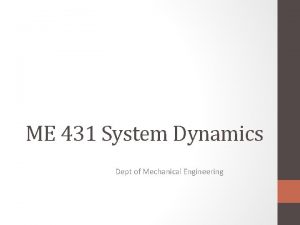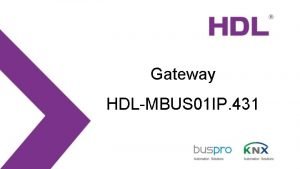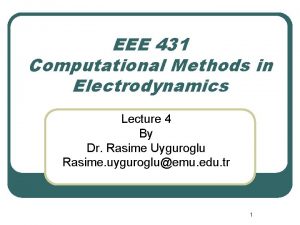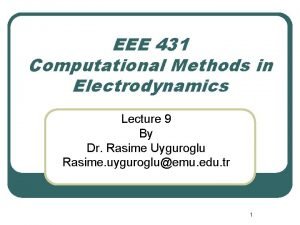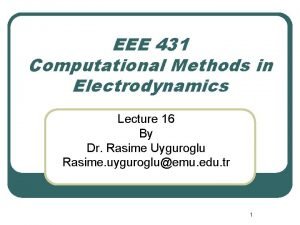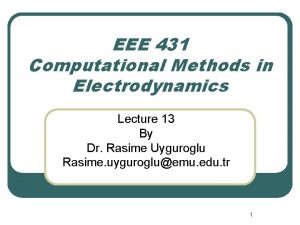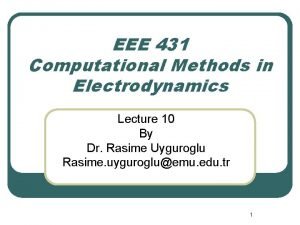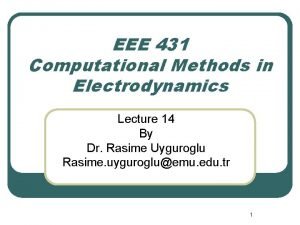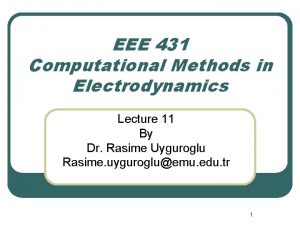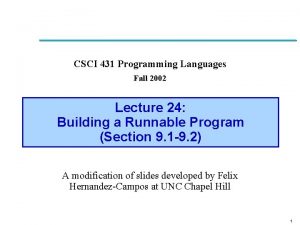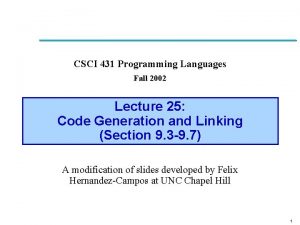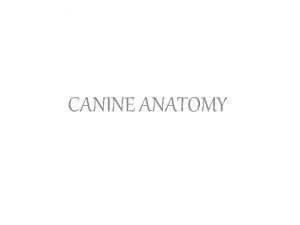MAE 431 Energy System Fall 2002 Dr Hui









- Slides: 9

MAE 431 Energy System Fall 2002 Dr. Hui Meng Knox 104 MWF 8: 00 am http: //www. eng. buffalo. edu/Courses/mae 431/ 1

How to study this course (similar to MAE 335) Before Class Read (at least look at) assigned sections In Class Do not try to take detailed notes Listen to, fill in, and understand what you have read Write down key words for concepts, definitions, problem solving techniques, etc. so you know what to emphasize when reading the book. Ask questions 2

How to study this course After Class Study key concepts – write out definitions and descriptions Work assigned problems – simultaneously study theory and example solutions Go to recitations only after you have tried to work the problems yourself. The TA will only give you hints when you are lost; they will not solve the homework problems for you. The TA may provide additional examples. 3

Examples of Energy Systems Power Generation Automobile engines Fossil- & nuclear-fueled power stations Propulsion systems for aircraft & rockets (Ch. 9) (Ch. 8, 9) (Ch. 9) HVAC systems Vapor compression refrigeration Heat pumps Air-conditioning (Ch. 10) (Ch. 12) Reacting systems Combustion (Ch. 13) 4

Examples of Energy Systems (cont’d) Cooling of electronic equipment Alternative energy systems Fuel cells Thermoelectric and thermionic devices Magnetohydrodynamic (MHD) converters Solar-activated heating, cooling, and power generation Geothermal systems Ocean thermal, wave, and tidal power generation Wind power Biomedical applications Life-support systems Artificial organs 5

Automobile Engine 6

Electrical Power Plant 7

Turbojet Engine 8

Outline of This Course A. Fundamentals of Thermodynamics 1. Basic concepts and evaluating properties (Ch. 1, 2, 3) 2. Energy balance for closed and open systems (1 st Law) (Ch. 2 +4) 3. Entropy balance for closed and open systems (2 nd Law) (Ch. 5 + 6) 4. Availability analysis (Chapter 7) B. Application to Energy Systems 1. Vapor power systems (Chapter 8) 2. Gas power systems (Chapter 9) 3. Refrigeration and heat pump (Chapter 10) C. Thermodynamic Property Relations (Chapter 11) D. Gas Mixtures and Applications 1. Non-reacting gas mixtures, Psychrometrics (Chapter 12) 2. Reacting gas mixtures and combustion (Chapter 13) 9

